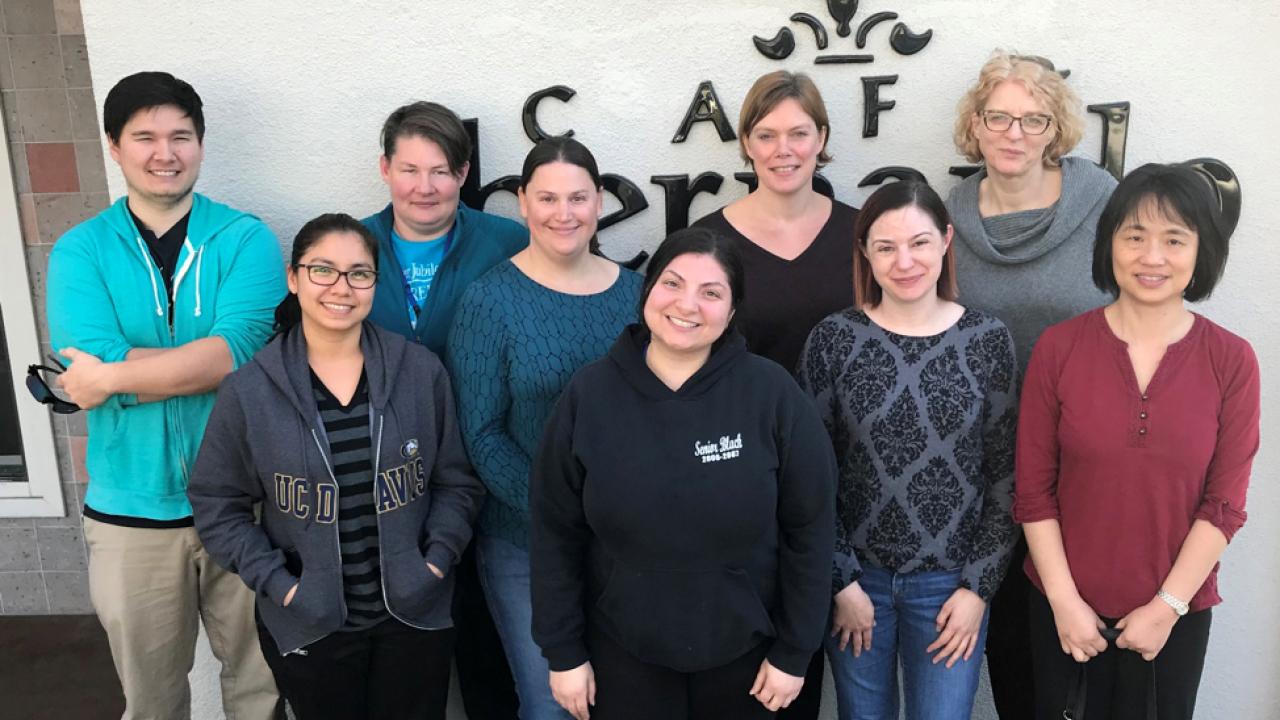
Protective Humoral Immunity to Influenza Infection
Principal Investigator
Baumgarth, Nicole
Research Team
Those directly involved in the research project:
- Zheng Luo (SRA III
- Jonathan Lam (Grad Student)
- Rebecca Blandino (Grad Student)
- Fauna Smith, DVM (Grad Student)
Collaborators providing reagents/techniques:
- Greg Barton (UC Berkeley)
- Xiangdong Zhu (Dept. Physics, UC Davis)
Sponsor
NIH National Institute of Allergy and Infectious Diseases (NIAID)
Award Amount
$485,276
Abstract
The extrafollicular (EF) B cell response generates virus-specific IgM, IgG and IgA in the airway lumen and local lymph nodes as early as 72h after influenza virus infection, correlating temporally with virus clearance. EF responses are distinct in kinetics, function and signaling requirements from the slower germinal center responses. EF B cell responses habe been largely dismissed as significant in pathogen-induced immunity, as they are though to generate only short-lived plasma cells and low affinity antibodies. Yet, consistent with recent studies on a requirement for high-affinity interaction between BCR and antigen for induction of EF responses, our studies show that a prototypic EF response to HA of influenza A/Puerto Rico /8/34 generates high-affinity protective antibodies long-term after influenza infection. Thus, identifying this response as a crucial component of primary influenza-infection-induced antiviral immunity. However, immunization with inactivated virus in adjuvant failed to induce EF responses, yet did induce strong germinal centers, thereby identifying a specific deficit in vaccine-induced humoral immunity, that may reduce its efficacy. Because the signals inducing EF responses are unknown, and their protective capacity is unclear, they cannot be exploited for therapeutic or prophylactic uses. To overcome this knowledge gap we propose to test our hypothesis that innate B cell direct signaling drives high affinity long-term protective antiviral humoral immunity via induction of strong EF responses. Specific Aim #1 will use gene-targeted mice to identify the receptors and signaling pathways responsible for EF development after influenza infection and complement inactivated influenza vaccines with their corresponding ligands to generate EF responses. Aim 2 will delineate the molecular targets of these signaling pathways for the differentiation of B cells to EF plasma blasts, following the fate of influenza HA-specific B cells. Aim 3 will assess the quality and protective capacity of EF and GC B cell responses. Successful outcome of these studies will provide a conceptual advance by demonstrating that EF responses to infection can generate high-affinity antibody responses and provide immune protection. Identification of the ligands, signaling pathways and the gene targets that drive EF responses will increase fundamental knowledge on the mechanisms of B cell differentiation and open the door for the exploitation of EF responses to enhance immunity through therapeutic and prophylactic interventions.
